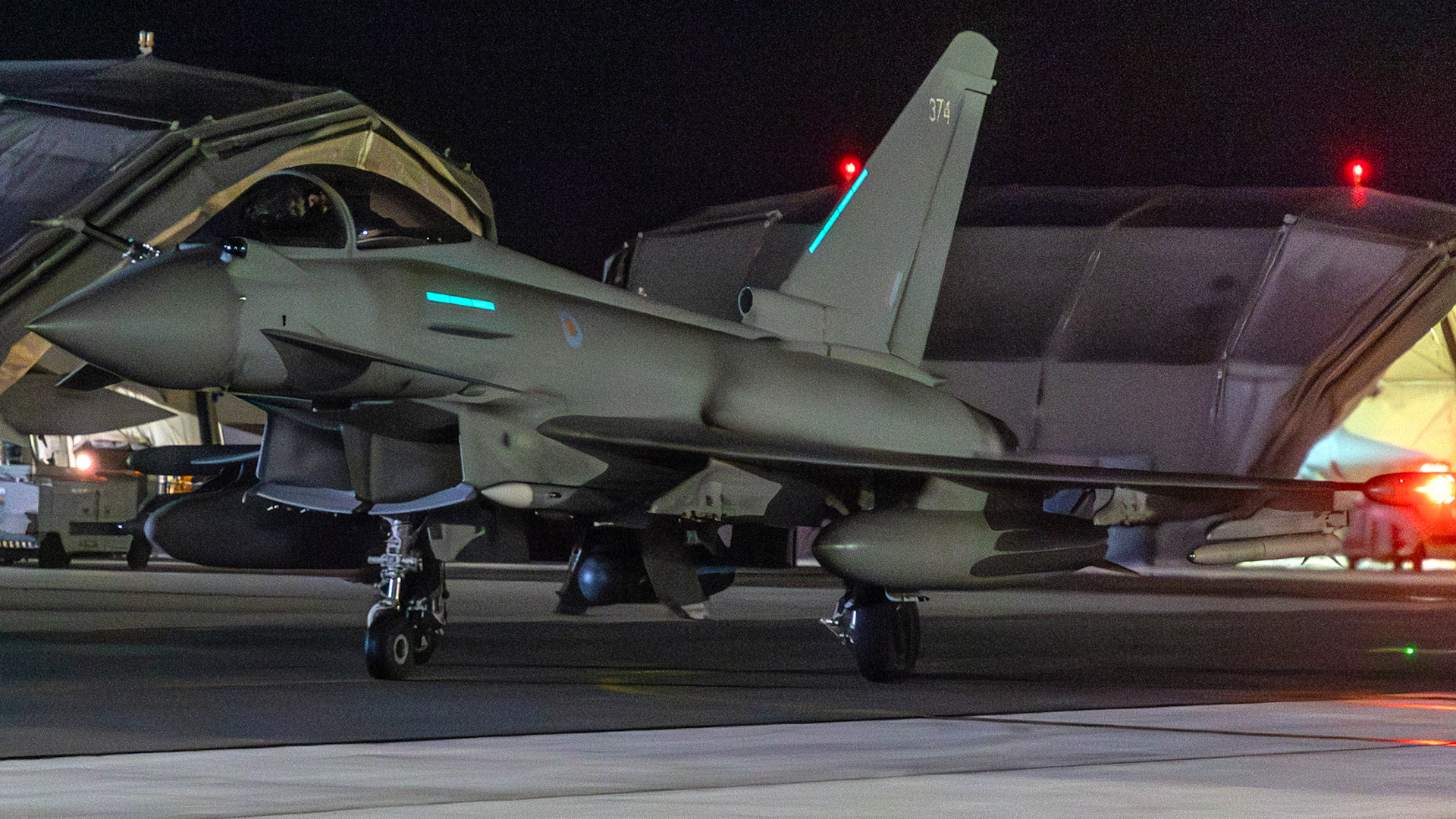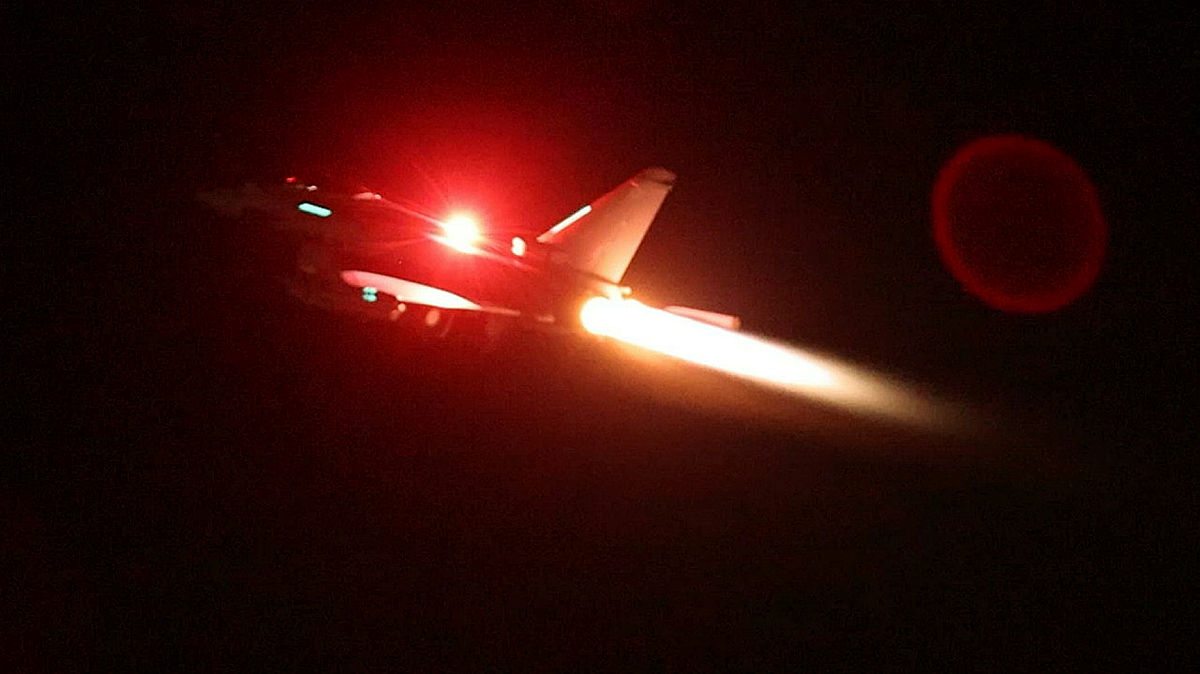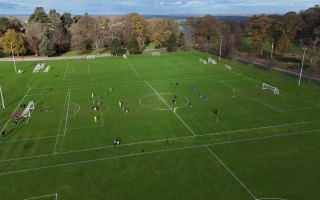
Royal Air Force and US attacks on Houthi rebels in Yemen: What we know so far

Royal Air Force Typhoon jets, alongside the US, launched targeted strikes against facilities used by Houthi rebels in Yemen.
Armed Forces Minister James Heappey said the air strikes were in self-defence of Royal Navy vessels in the Red Sea, following a string of attacks by the rebel group on warships and commercial shipping in the region.
How many targets were hit during the strikes in Yemen?
A senior US Air Force commander said at least 60 targets across 16 locations in Yemen had been hit during the overnight raids.
"Over 100 precision-guided munitions of various types were used in the strikes," said Lieutenant General Alex Grynkewich, who oversees operations in the Middle East.
"These strikes were comprised of coalition air and maritime strike and support assets from across the region."
What Houthi targets were hit in Yemen?
According to the Ministry of Defence, the RAF strikes took place in Bani in the northwest of the country, which the MOD said was a drone operational site, and Abbs airfield, which was a launching site for missiles and drones.
US Secretary of Defense Lloyd Austin said: "Today's strikes targeted sites associated with the Houthis' unmanned aerial vehicle, ballistic and cruise missile, and coastal radar and air surveillance capabilities.
"The United States maintains its right to self-defence and, if necessary, we will take follow-on actions to protect US forces."
A Houthi military spokesperson said 73 strikes had killed five of the group's fighters and wounded six others.

What weapons did the RAF Typhoons use to strike Houthi targets in Yemen?
The Paveway IV laser-guided bomb has been in operational use since 2008 and was used against the Houthi rebels.
Paveway IV is an advanced and highly accurate weapon that has been used on operations in Libya and against the so-called Islamic State (IS) in Iraq and Syria.
The state-of-the-art precision-guided bomb can be deployed against the vast majority of the RAF's potential targets.
Costing about £30,000 each and weighing 226kg, the Paveway has four main parts – the guidance system in the front, a 500lb warhead in the middle (which can penetrate concrete) and, at the back, the tail section guides the bomb, with a smart fuse to control how it detonates.
How did the Houthis react?
The group's leader, Mohammed al-Bukhaiti, said the US and UK would soon realise the action was "the greatest folly in their history".
"America and Britain made a mistake in launching the war on Yemen because they did not benefit from their previous experiences," he wrote on social media.
"Every individual in this world is faced with two choices - either to stand with the victims of genocide or to stand with its perpetrators."
Why were strikes carried out against Houthi targets in Yemen?
Rishi Sunak said the UK would "always stand up for freedom of navigation and the free flow of trade".
The Prime Minister said: "In recent months, the Houthi militia have carried out a series of dangerous and destabilising attacks against commercial shipping in the Red Sea, threatening UK and other international ships, causing major disruption to a vital trade route and driving up commodity prices."
Will there be more UK strikes to come in Yemen?
Armed Forces Minister James Heappey said no more strikes or military actions were planned at the moment. He told BBC Breakfast: "There are none immediately planned - and that’s an important point.
"Last night was a limited, proportionate, necessary response in self-defence of our warships in the region who themselves are there to defend commercial shipping and protect the freedom of navigation through the Bab el Mandeb Strait and the southern Red Sea that is so vital to global trade.
"The Government's legal position is sound, it's based on self-defence. And our reason for being in the region is similarly sound in so much as we need to ensure freedom of navigation through this vital global seaway."
What was the legal basis for the strikes in Yemen?
The Government has published a summary of its legal position following the military strikes on Houthi targets.
It states: "Military intervention to strike carefully identified targets in order to effectively downgrade the Houthis' capabilities and deter further attacks was lawfully taken.
"It was necessary and proportionate to respond to attacks by the Houthis and this was the only feasible means available to deal with such attacks.
"The UK is permitted under international law to use force in such circumstances where acting in self-defence is the only feasible means to deal with an actual or imminent armed attack and where the force used is necessary and proportionate.
"The Government will notify the United Nations Security Council of the actions it has taken under Article 51 of the United Nations Charter."
What has been the reaction to the strikes in Yemen?
Prime Minister Rishi Sunak hit back at critics who suggested the RAF strikes were not proportionate.
A spokeswoman for the Prime Minister also rejected claims by Turkish President Recep Tayyip Erdogan that the UK and the US were trying to turn the Red Sea into a "sea of blood".
She said: "We wouldn't agree with that. This was limited and targeted strikes in response to aggression.
"We acted in self-defence in accordance with Article 51 of the UN Charter."
What does Article 51 of the UN Charter say?
"Nothing in the present Charter shall impair the inherent right of individual or collective self-defence if an armed attack occurs against a Member of the United Nations, until the Security Council has taken measures necessary to maintain international peace and security.
"Measures taken by Members in the exercise of this right of self-defence shall be immediately reported to the Security Council and shall not in any way affect the authority and responsibility of the Security Council under the present Charter to take at any time such action as it deems necessary in order to maintain or restore international peace and security."









